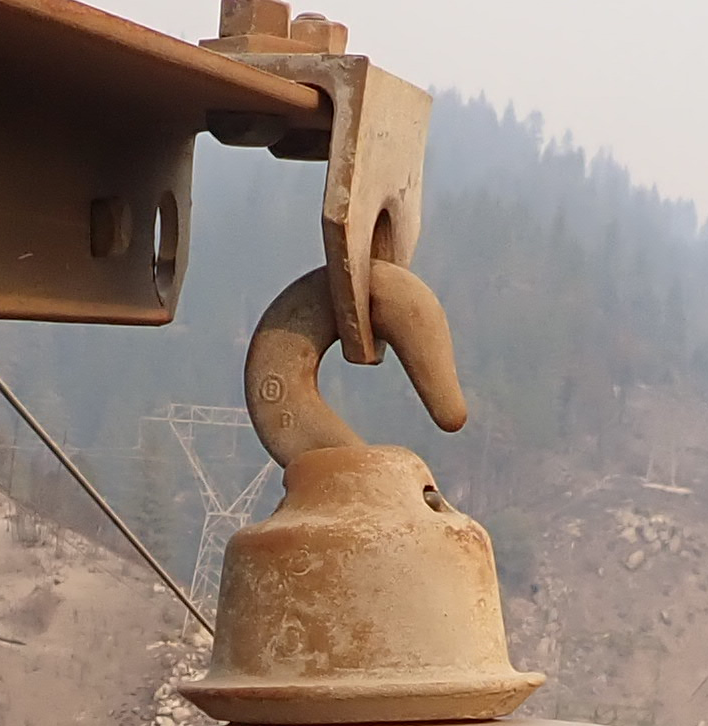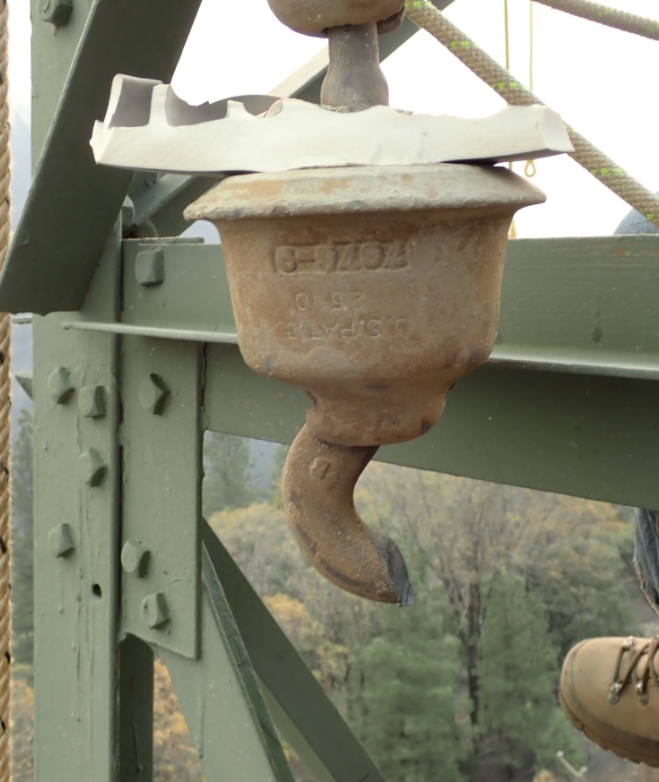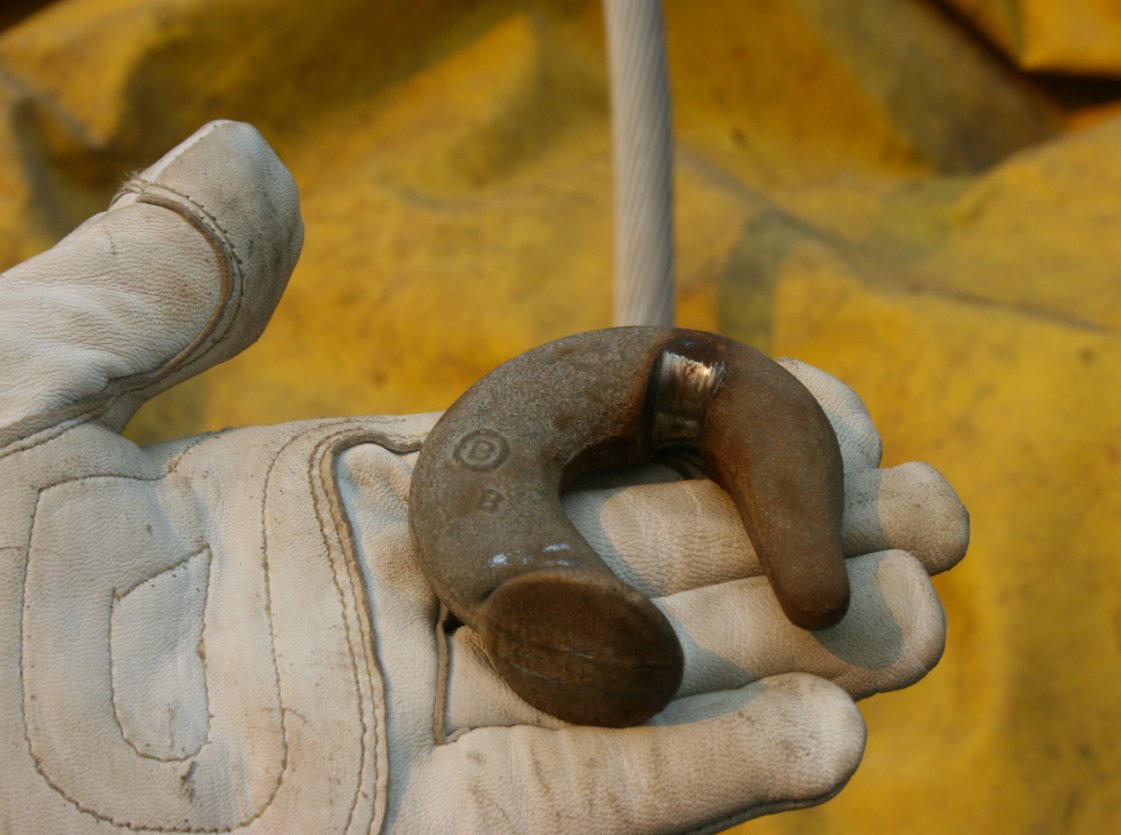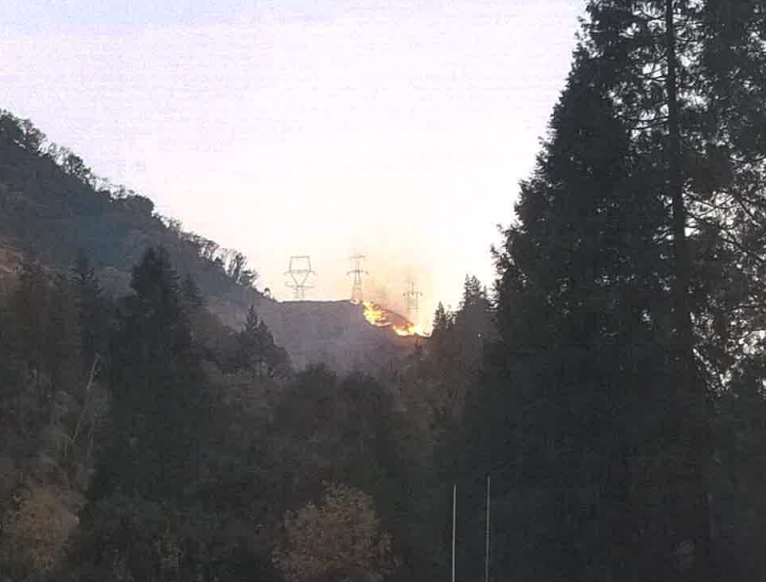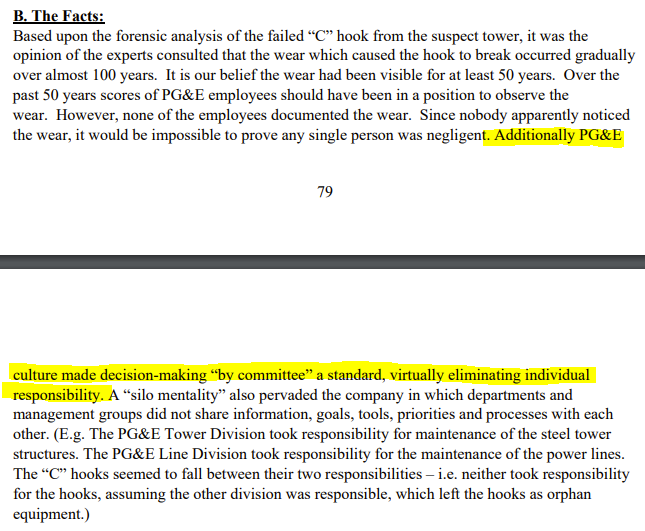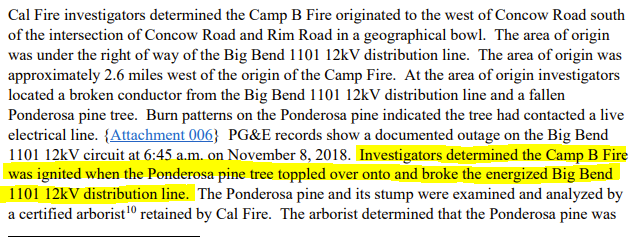this electrical transmission tower has a little problem. can you spot it? actually, it's not a small problem--it cost us 16.65 *billion* dollars and caused the deaths of 85 people. 
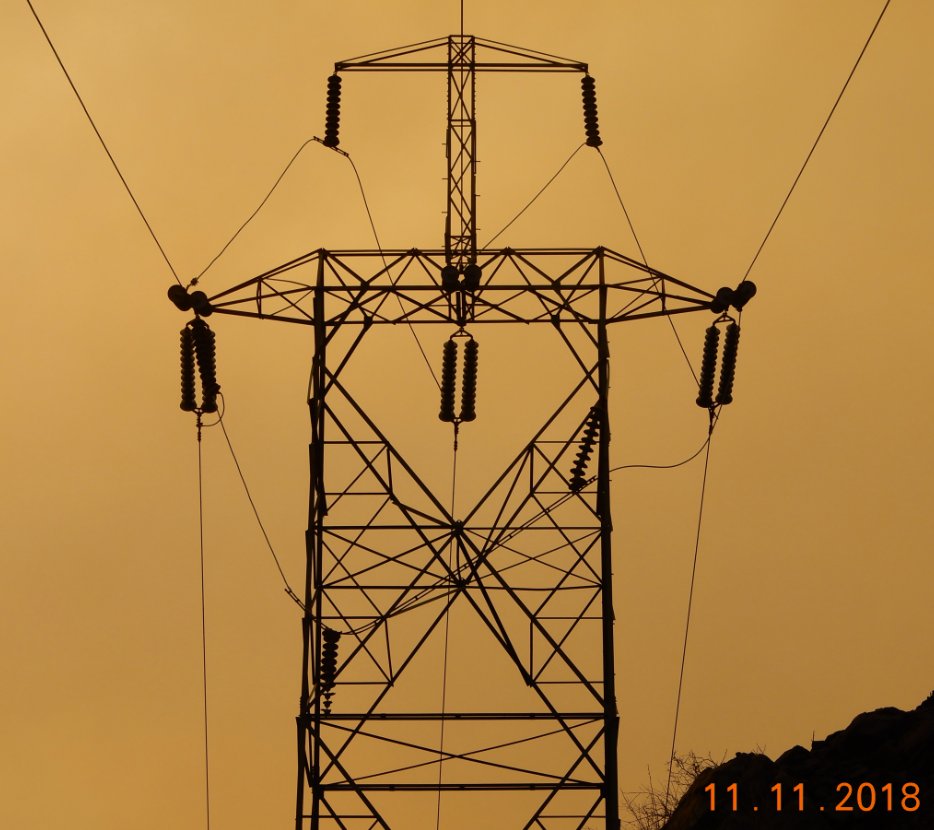
here's what it is supposed to look like. a transposition tower rotates the relative position of the three phase wires. this is done to balance the impedance of each of the wires so that one of them doesn't hog current. 
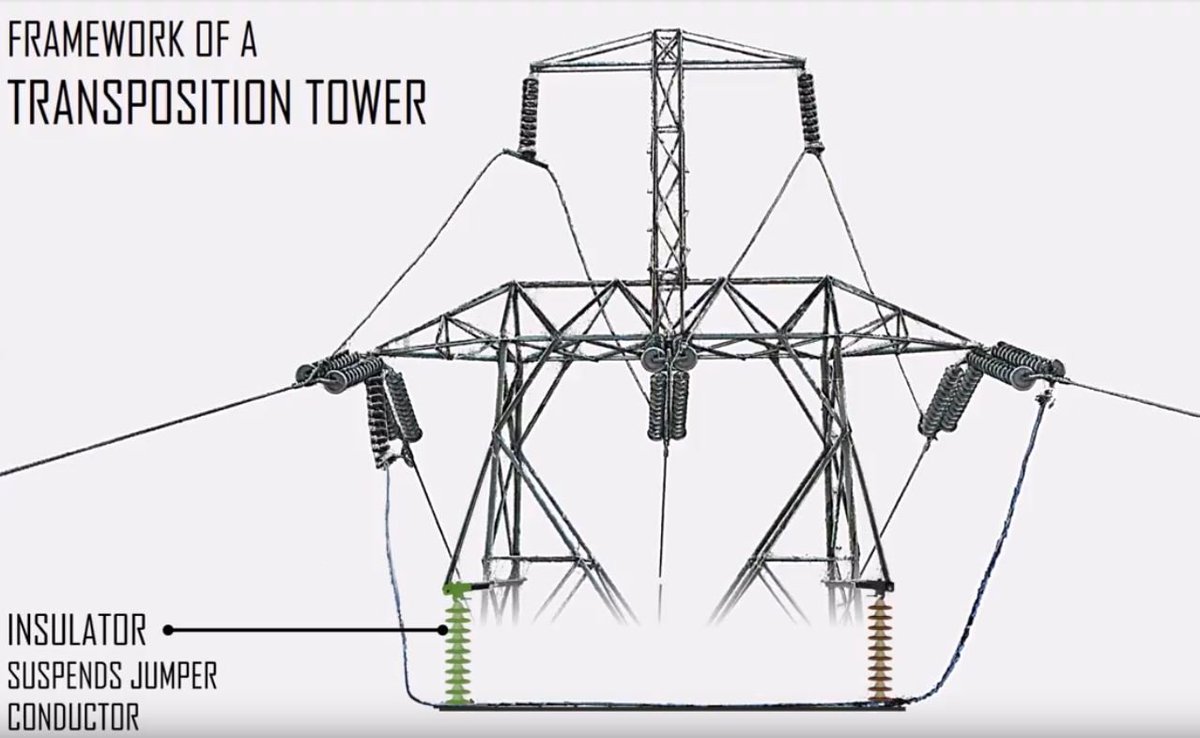
here's the problem. the jumper conductor (the horizontal piece that brings a conductor from one side of the tower to the other) has fallen down. you can see the insulator dangling (circled.) but why did it fall? 
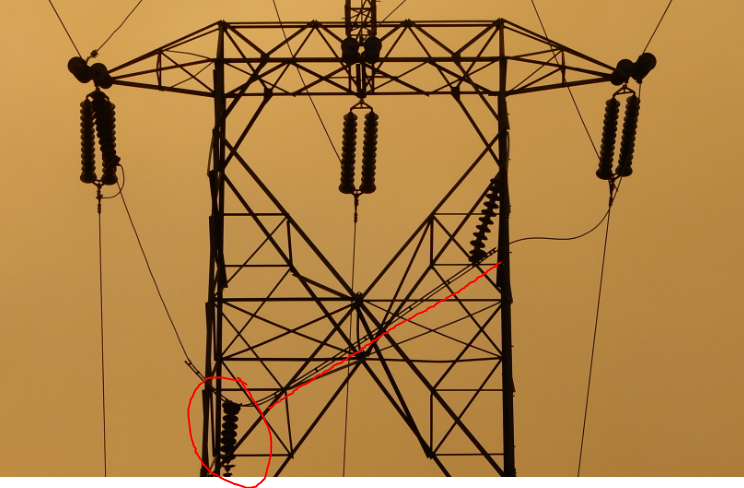
let's look at an insulator up close. they're actually quite large; they just appear small because you're seeing them from the ground. noticed the hook that holds it in place? 
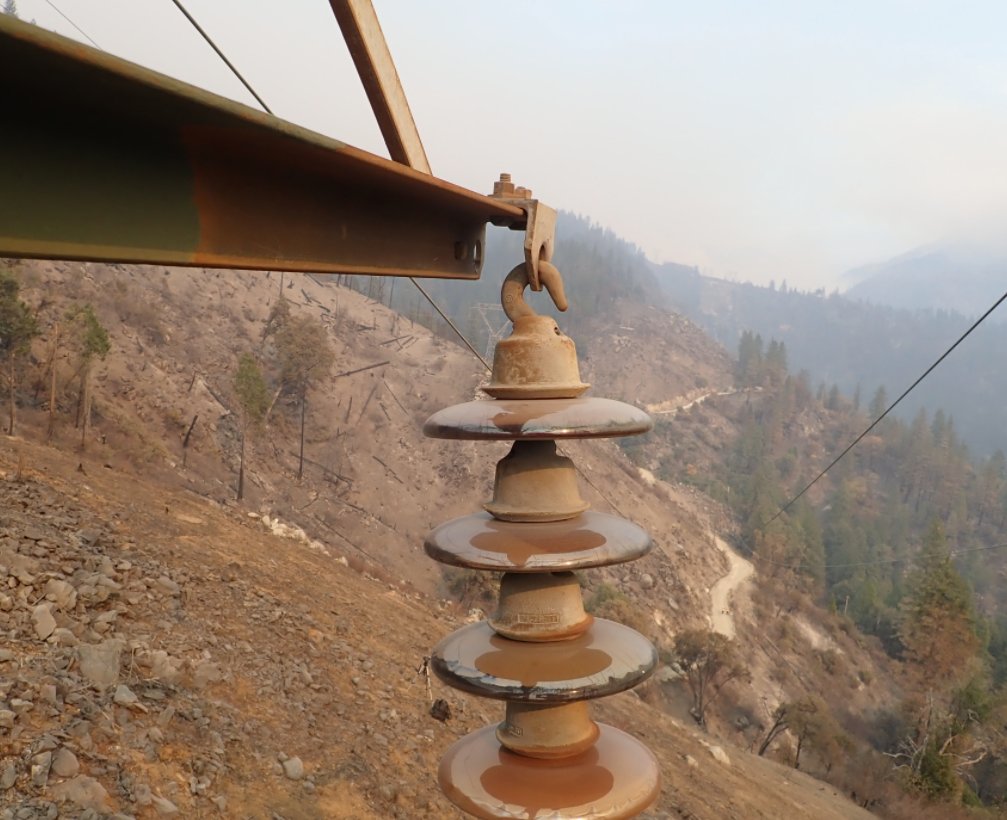
zooming in even closer, you can see something odd about the way the C hook broke off. inspect it with the eye of a materials engineer. what do you see? 

penciled over in red are wear marks. this hook has been swinging back and forth for a very, very long time -- you can see rust stains (circled in black) the blue circle shows where the hook finally snapped.
oh, and this is about an inch in diameter.
oh, and this is about an inch in diameter.
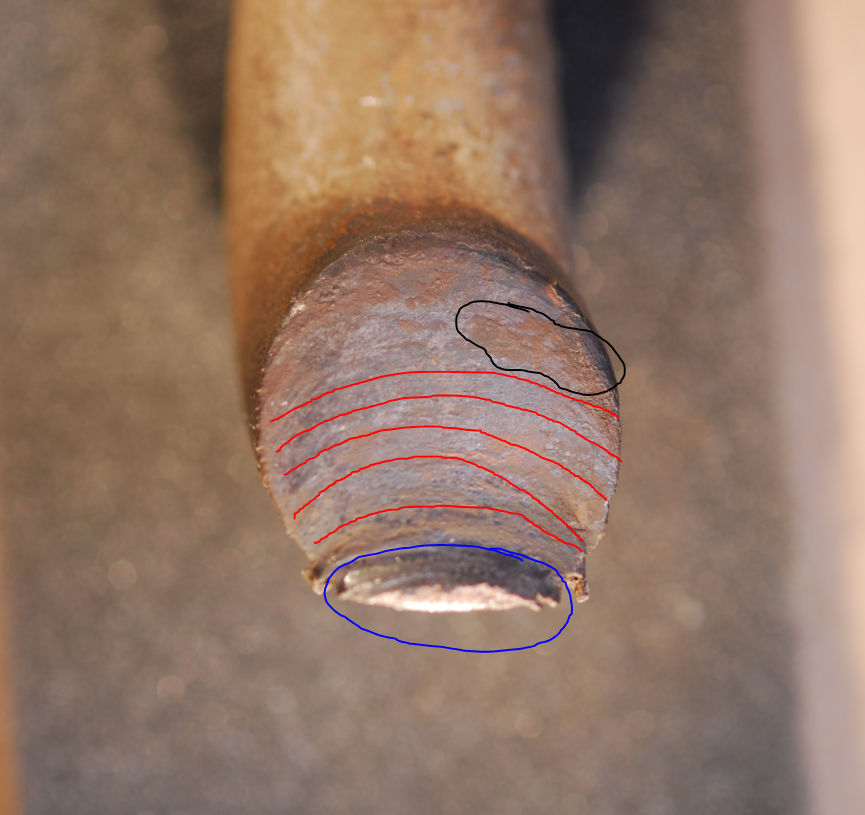
so when the C hook broke and the hanger fell, the steel-reinforced aluminum conductor that carries 115,000V bounced and shorted out against the metal side of the tower, spraying chunks of white-hot aluminum across the ground underneath the tower. 
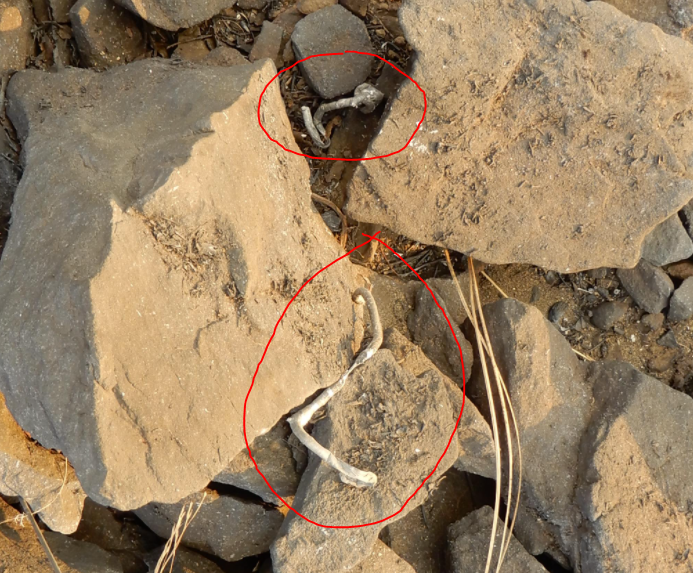
the fire spread rapidly, and about 2 hours later, at 8am on November 8th, 2018, entered the nearby town of Paradise, CA. 

this was the Camp fire, the most destructive in California history, and it burned most of the city to the ground, including my grandparents house. 

(my grandfather had passed away a couple of years before, and my grandmother had moved to a facility scant *months* before the fire)
sadly, many others were not so lucky, and some were not able to escape the fire, including computing pioneer Bill Godbout (en.wikipedia.org/wiki/Bill_Godb…)
i wanted to add a little more detail on the human cost of the fire but--i just can't do it. i read through the stories and i had to stop. these are people who knew my grandparents, went to church together, participated in civic life. it's too hard.
so let's get back to the engineering talk. remember that worn C hook? how long was it rubbing against the hangar bracket? 

the answer is that we don't know. we think it is about 97 (!) years old, but we're not sure because PG&E (the electric company that owns the lines) didn't keep records about it. 

after the fire, many of the pieces were taken to the FBI lab's metallurgical unit at Quantico, and they determined that the C hook was made of cast iron. not all the C hooks on these 100-year old towers were made of cast iron--many were made of steel. but again: no records. 

PG&E knew that this was a problem because at some point they bolted on L brackets and moved the C hooks onto the new brackets, probably concerned that the old bracket hole had mostly worn through. we don't know when they did this because they kept no records. 
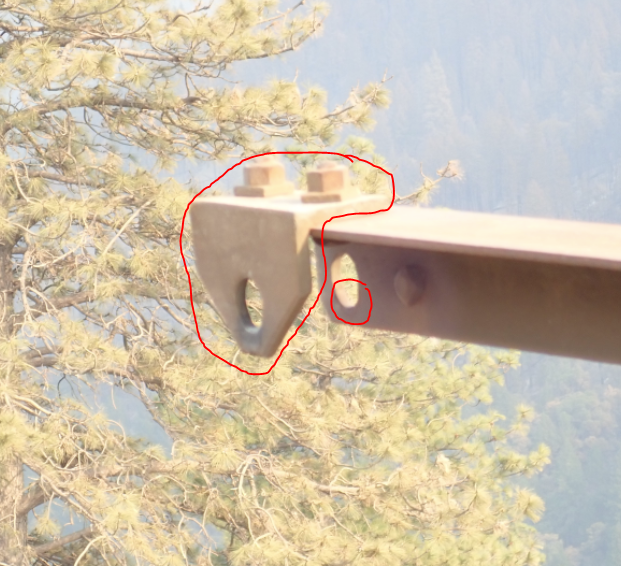
and yes, PG&E is legally required to inspect these towers periodically. we don't know exactly when, because (you guessed it) no records from before the year 2000.
the investigating team interviewed troublemen (inspectors for PG&E) to find out exactly how they did the inspections. they were done mostly from helicopters. and despite having official procedures, here's what they did
✅is the tower still standing?
✅is the tower still standing?
just to pile it on a little more, here's another tower nearby. at some point, the jumper conductor broke, but to fix it, they just pulled it tight and spliced it. think: someone looked at this, with the taught conductor and the insulator pulled up sideways, and said "good enough" 
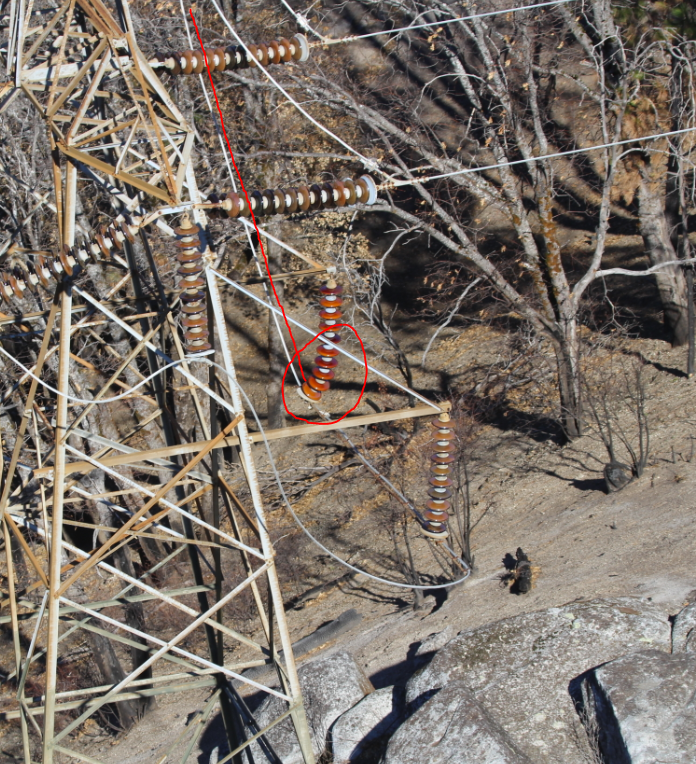
there's even documented evidence that PG&E knew about the problem with the C hooks and hangers and yet did nothing. 
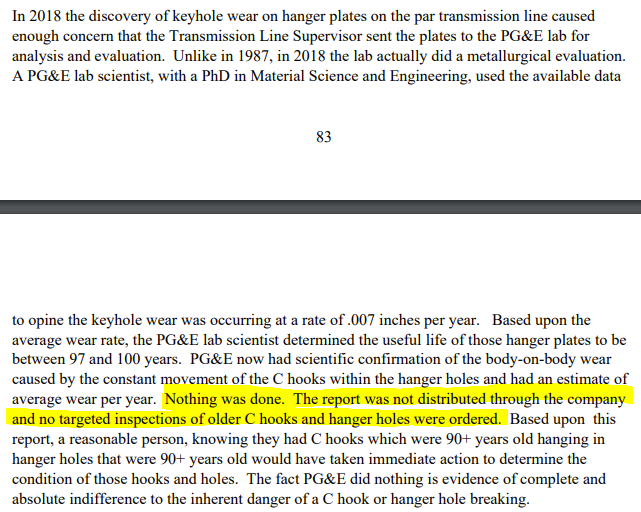
i like this used car analogy. basically, they bought a used car and ran it without oil changes until the engine seized. 
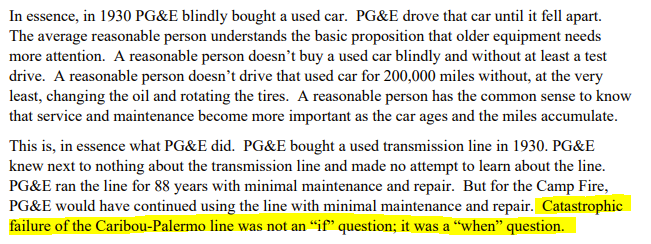
here's my previous thread on the San Bruno gas explosion.
https://twitter.com/TubeTimeUS/status/1211454598575058944
on June 16 of this year, PG&E pled guilty to charges of unlawfully causing a fire and 84 counts of involuntary manslaughter. their penalty? a $4 million fine.
so what about the managers and executives at PG&E who were responsible? can we hold them personally liable? apparently, there's not enough evidence. but why? 

in fact, they had a perverse incentive to NOT maintain things, since those costs came directly out of their profit! 
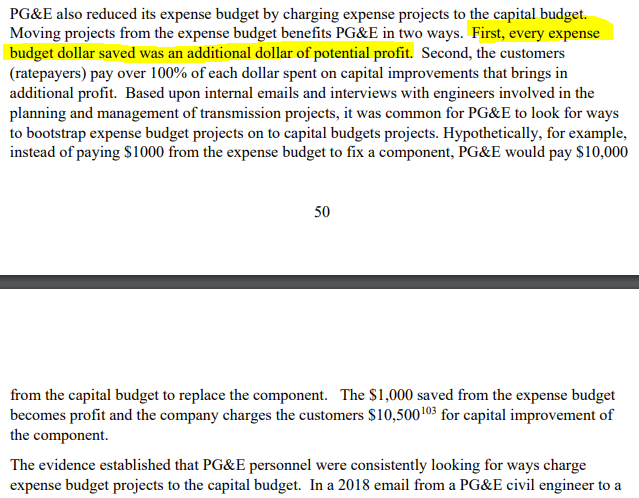
so despite PG&E's criminal negligence, there's a good chance that Paradise would have burned down anyway, even if they had good records and had kept the tower maintained. surprising? read on...
it turns out there was a second, unrelated fire that started at almost the same time and almost the same place! 

...and it turns out this was *not* PG&E's fault. there's no way the inspectors, even if they were competent, could have known that the tree would fall. 

here's the second, more insidious cause: climate change. extreme weather->more vegetation->increased fuel load as well as hotter/drier weather. 

while solving climate change is a good long term goal (although something that the human race is notoriously bad at) we need to improve our forestry management practices. and keep better records! and hold people accountable!
ok time for some sources: i am mainly relying on the excellent summary report from the Butte County DA: buttecounty.net/Portals/30/CFR…
i recommend you read the whole thing.
i recommend you read the whole thing.
the DA's report also discuss the legal and accounting angles, which are fascinating but far outside my area of expertise.
the Wikipedia article on the Camp fire is decent for general information. en.wikipedia.org/wiki/Camp_Fire…
i noticed in the comments that some people advocate nationalizing the electric company. it sounds nice but it's not a panacea: a government agency and a private company are just groups of people. what's important is *how* you organize them and set up accountability.
if you think of PG&E (the organization) as an emergent intelligence, it was set up to optimize only one metric (profit) and utterly failed to take into account another metric (risk).
i'm sure there are people who study this sort of thing who could examine PG&E and point out exactly what caused this organizational failure.
quick disclaimer: my background and area of expertise is electronics. i have an EE degree but i am not officially (according to the state of CA) an "electrical engineer" since i am not a licensed professional engineer.
curious to see what the tower (#27/222) looks like now? someone took a 360° photo of it! goo.gl/maps/LsTjZEv9N…
again i want to emphasize that taking PG&E and making it state-owned and state-run is not a magic bullet. i mean, c'mon, Chernobyl was state-run! it comes down to organization, accountability, and incentives. they're complex problems but they can be solved.
• • •
Missing some Tweet in this thread? You can try to
force a refresh

